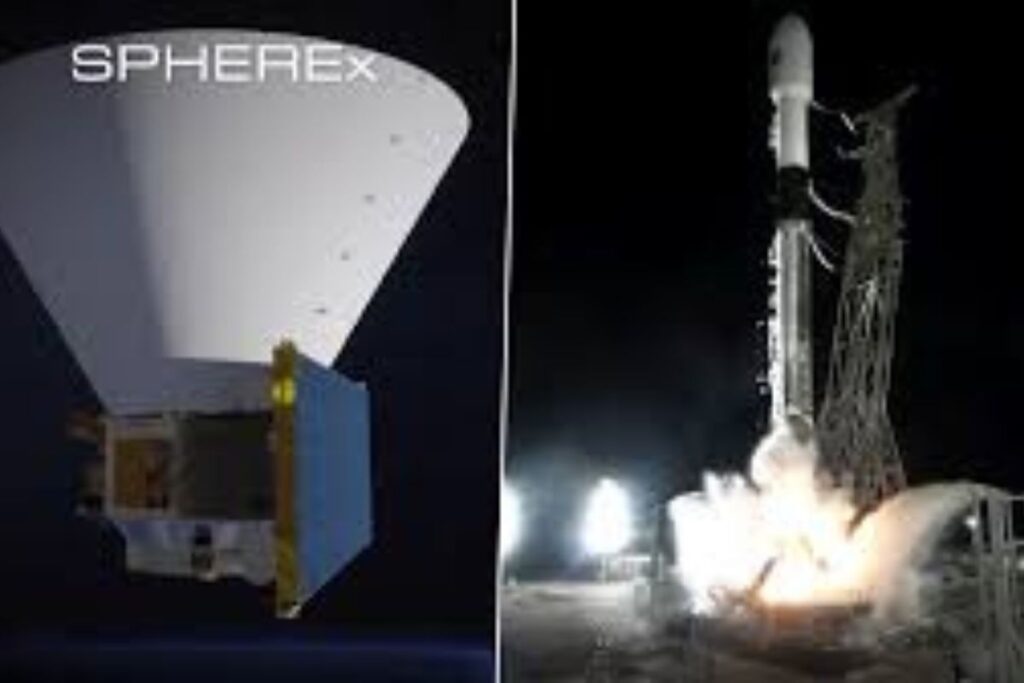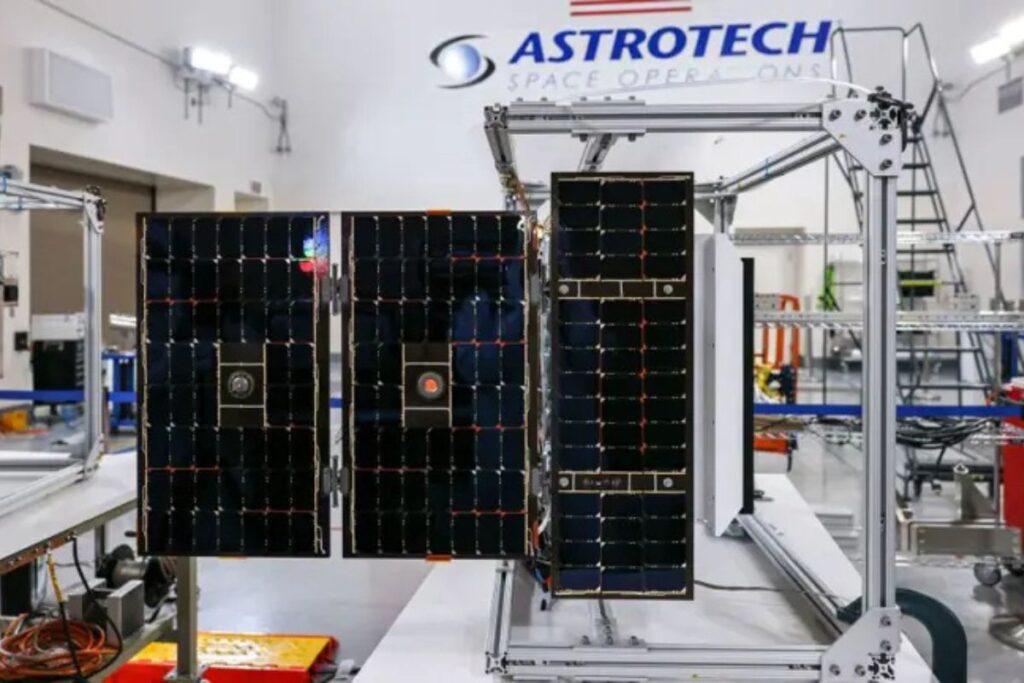NASA and SpaceX have hit the pause button on the highly anticipated launch of two groundbreaking space missions: SPHEREx and PUNCH. Originally scheduled to lift off aboard a SpaceX Falcon 9 rocket at 7:09 p.m. PT on Saturday, March 8, from Vandenberg Space Force Base in California, the missions are now on hold.
NASA announced that additional time is needed for rocket checkouts, delaying the launch of these innovative projects designed to explore the cosmos and study the sun. A new launch date will be shared once confirmed, with multiple windows available through April.
The delay comes after a series of challenges, including weather issues and integration hiccups, which have plagued the mission since its initial launch window opened on February 28. Despite the setback, the SPHEREx and PUNCH missions promise to deliver transformative insights into the universe and our solar system. In this article, we’ll explore what these missions entail, why they matter, and what the delay means for NASA, SpaceX, and the broader space exploration community.
A Tale of Two Missions: SPHEREx and PUNCH Explained
NASA’s SPHEREx (Spectro-Photometer for the History of the Universe, Epoch of Reionization and Ices Explorer) and PUNCH (Polarimeter to Unify the Corona and Heliosphere) are two distinct yet complementary missions sharing a single ride into space aboard a SpaceX Falcon 9 rocket. While their objectives differ, both aim to expand our understanding of the universe and our place within it.
Read Also: Alexa+ Revealed: Amazon’s AI Upgrade Brings Smarter Chats and Next-Level Smart Home Control
SPHEREx: Mapping the Cosmos and Searching for Life’s Ingredients
SPHEREx is a cutting-edge space telescope designed to survey the entire sky and collect data on over 450 million galaxies and more than 100 million stars in the Milky Way. Orbiting Earth at an altitude of 404 miles (650 kilometers), SPHEREx will spend just over two years creating a detailed map of the cosmos in 102 colors of infrared light.
This infrared survey will help scientists uncover the chemical composition of celestial objects by analyzing light wavelengths, much like a prism splits light into a rainbow.
One of SPHEREx’s primary goals is to investigate cosmic inflation—the rapid expansion of the universe shortly after the Big Bang. By mapping galaxy distributions, researchers hope to better understand this pivotal moment in cosmic history.
Additionally, SPHEREx will search for the key ingredients of life, such as water, carbon dioxide, and carbon monoxide, frozen within molecular clouds—massive regions of gas and dust where stars and planets form. This could reveal how these essential elements are distributed across the galaxy and incorporated into new planetary systems, potentially shedding light on the origins of Earth’s water.
PUNCH: Unlocking the Mysteries of the Sun
While SPHEREx looks outward to the cosmos, PUNCH turns its gaze toward our nearest star: the sun. The Polarimeter to Unify the Corona and Heliosphere mission consists of four small, suitcase-sized satellites that will work together to study the sun’s outer atmosphere, known as the corona, and the solar wind—a stream of energized particles flowing from the sun.

By observing these phenomena, PUNCH aims to deepen our understanding of how the sun influences the solar system, including its impact on space weather, which can affect satellites, power grids, and communication systems on Earth.
Both SPHEREx and PUNCH will operate in a sun-synchronous orbit, maintaining a consistent orientation relative to the sun as they circle Earth’s poles. This shared orbit makes them ideal candidates for a rideshare launch, a cost-effective strategy championed by NASA to maximize scientific output.
Why the Delay? Challenges Facing the SPHEREx and PUNCH Launch
The road to space is rarely smooth, and the SPHEREx and PUNCH missions are no exception. Originally set to launch on February 28, the missions faced multiple delays due to unfavorable weather and technical difficulties. Engineers encountered integration issues while attaching the spacecraft to the SpaceX Falcon 9 rocket and encapsulating them within a protective fairing, pushing the timeline back several times.
The latest postponement, announced on March 8, stems from the need for additional rocket checkouts. “The additional time will allow teams to continue rocket checkouts ahead of liftoff,” NASA stated in an update. Julianna Scheiman, Director of NASA Science Missions at SpaceX, noted that weather and integration challenges have compounded the delays, with scheduling constraints at Vandenberg Space Force Base further complicating matters.
Despite these setbacks, NASA and SpaceX remain committed to ensuring a successful launch. With multiple launch windows available through April, the teams have ample opportunity to address any issues and prepare the Falcon 9 for liftoff.
The Bigger Picture: Implications for NASA and SpaceX
The delay of the SPHEREx and PUNCH missions highlights the complexities of space exploration, where precision and safety are paramount. For NASA, these missions represent a continuation of its mission to explore the unknown and advance scientific knowledge.
Dr. Nicky Fox, Associate Administrator for NASA’s Science Mission Directorate, emphasized the cost-saving benefits of launching PUNCH as a rideshare with SPHEREx: “It helps get more science into space for less cost.” This approach underscores NASA’s strategy of leveraging commercial partnerships, such as its collaboration with SpaceX, to maximize resources.
For SpaceX, the Falcon 9 rocket remains a workhorse of the space industry, with hundreds of successful launches under its belt. However, each mission requires meticulous preparation, and delays like this one are not uncommon. The company’s reusable rocket technology, which allows the Falcon 9’s first stage to return to Earth after launch, continues to drive down costs and make space more accessible. A successful launch of SPHEREx and PUNCH will further solidify SpaceX’s reputation as a reliable partner for NASA and other space agencies.
What SPHEREx and PUNCH Mean for Science and Society

The scientific potential of SPHEREx and PUNCH is immense, with implications that extend far beyond the launch pad.
SPHEREx: A Cosmic Time Machine and Life Detector
SPHEREx’s ability to map the sky in 102 infrared colors sets it apart from other telescopes, such as the James Webb Space Telescope (JWST). While JWST focuses on detailed observations of specific targets, SPHEREx is a survey telescope, capturing a broader view of the cosmos. “We are the first mission to look at the whole sky in so many colors,” said Jamie Bock, SPHEREx principal investigator at NASA’s Jet Propulsion Laboratory and Caltech. “Whenever astronomers look at the sky in a new way, we can expect discoveries.”
By measuring the total glow of light from distant galaxies, SPHEREx will provide a comprehensive look at the universe’s major light sources. Its search for life’s ingredients within molecular clouds could answer fundamental questions about how planets form and whether the building blocks of life are common across the galaxy. If SPHEREx identifies intriguing targets, telescopes like JWST or Hubble can follow up with detailed observations, creating a powerful synergy between NASA’s observatories.
PUNCH: Safeguarding Earth from Solar Activity
PUNCH’s focus on the sun’s corona and solar wind has practical implications for life on Earth. Solar wind and coronal mass ejections can trigger space weather events, disrupting satellite operations, GPS systems, and even power grids. By studying these phenomena in detail, PUNCH will help scientists predict and mitigate the effects of solar activity, improving our resilience to space weather hazards.
Dr. Mark Clampin, Acting Deputy Associate Administrator of NASA’s Science Mission Directorate, highlighted the missions’ complementary nature: “PUNCH will study the sun in great detail, whereas SPHEREx is a survey mission that will scan the full sky and observe hundreds of millions of stars. NASA science missions are exploring the universe at different scales to help us understand the universe we live in and the sun that keeps our planet alive.”
The Road Ahead: What’s Next for SPHEREx and PUNCH?
With the launch delayed, NASA and SpaceX are working diligently to resolve the remaining issues and secure a new launch date. The teams will continue to monitor weather conditions and conduct thorough checkouts of the Falcon 9 rocket to ensure a safe and successful liftoff. Once in orbit, SPHEREx and PUNCH will begin their respective missions, delivering data that could reshape our understanding of the universe and our solar system.
For space enthusiasts, the delay is a reminder of the meticulous preparation required for space exploration. Multiple launch windows through April provide flexibility, and updates from NASA and SpaceX will keep the public informed as the new date approaches.
Read Also: iOS 18 Unveils Must-Know App Security Features for iPhone: Lock & Hide Apps with Ease
Conclusion: Awaiting a Cosmic Breakthrough
The delay of NASA’s SPHEREx and PUNCH missions aboard the SpaceX Falcon 9 rocket is a minor setback in the grand scheme of space exploration. These missions promise to unlock new insights into the origins of the universe, the ingredients of life, and the sun’s influence on our solar system. While the wait continues, the anticipation only grows for what these innovative projects will reveal once they reach orbit.
What do you think about the delay of SPHEREx and PUNCH? Are you excited to see how these missions will expand our knowledge of the cosmos and the sun? Share your thoughts in the comments below—we’d love to hear from you! Stay tuned for updates on the new launch date and prepare for a front-row seat to NASA’s next cosmic adventure.

